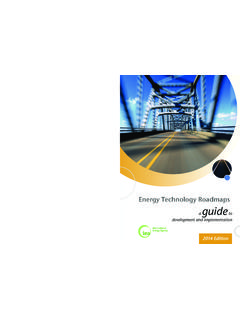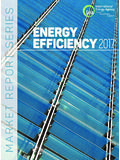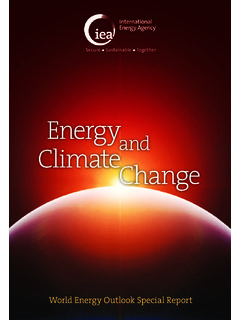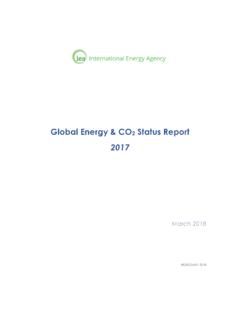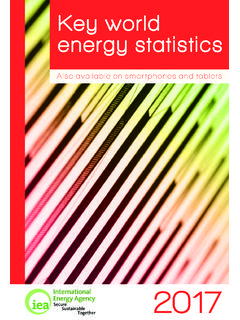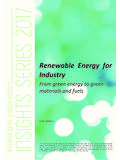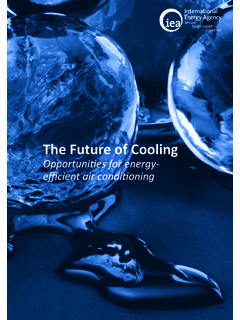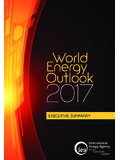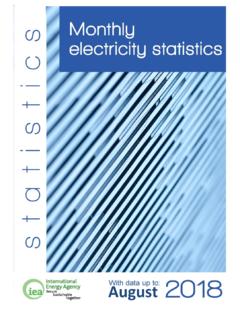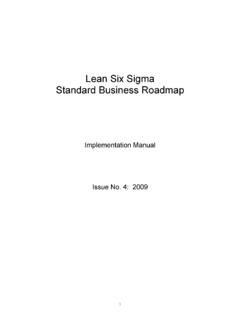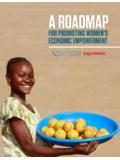Transcription of Technology Roadmap: Delivering Sustainable …
1 Technology RoadmapDelivering Sustainable Bioenergy20402045205020552060 INTERNATIONAL ENERGY AGENCYThe International Energy Agency (IEA), an autonomous agency, was established in November 1974. Its primary mandate was and is two-fold: to promote energy security amongst its member countries through collective response to physical disruptions in oil supply, and provide authoritative research and analysis on ways to ensure reliable, affordable and clean energy for its 29 member countries and beyond. The IEA carries out a comprehensive programme of energy co-operation among its member countries, each of which is obliged to hold oil stocks equivalent to 90 days of its net imports. The Agency s aims include the following objectives: n Secure member countries access to reliable and ample supplies of all forms of energy; in particular, through maintaining effective emergency response capabilities in case of oil supply disruptions.
2 N Promote Sustainable energy policies that spur economic growth and environmental protection in a global context particularly in terms of reducing greenhouse-gas emissions that contribute to climate change. n Improve transparency of international markets through collection and analysis of energy data. n Support global collaboration on energy Technology to secure future energy supplies and mitigate their environmental impact, including through improved energy efficiency and development and deployment of low-carbon Find solutions to global energy challenges through engagement and dialogue with non-member countries, industry, international organisations and other member countries: Australia Austria Belgium CanadaCzech RepublicDenmarkEstoniaFinland FranceGermanyGreeceHungaryIreland ItalyJapanKoreaLuxembourgNetherlandsNew Zealand NorwayPolandPortugalSlovak RepublicSpainSwedenSwitzerlandTurkeyUnit ed KingdomUnited StatesThe European Commission also participates in the work of the IEA.
3 OECD/IEA, 2017 International Energy Agency Website: note that this publication is subject to specific restrictions that limit its use and distribution. The terms and conditions are available online at is the main source of renewable energy today, contributing to energy used in power generation, heat for industry and buildings, and for transport. Despite recent high profile increases in wind and solar electricity, bioenergy provides five times their contribution to global final energy consumption, when traditional use of biomass is excluded. IEA modelling also indicates that modern bioenergy is an essential component of the future low carbon global energy system if global climate change commitments are to be met. This is especially the case since bioenergy can play an important role in helping to decarbonise sectors for which other options are scarce, such as in aviation, shipping or long haul road , the current rate of bioenergy deployment is well below the levels required within IEA long term climate models.
4 Acceleration is urgently needed to ramp up the contribution of bioenergy across all sectors notably in the transport sector where consumption is required to triple by 2030. Moreover, bioenergy is a complex subject with many potential feedstocks, conversion processes and energy applications. It interacts strongly with the agriculture, forestry and waste management sectors, and its prospects are linked to the growth of a broader bioeconomy. bioenergy can also sometimes be a controversial topic, and there is an increasing understanding that bioenergy can only expand if supplied and used in a Sustainable roadmap re-examines the role of bioenergy in light of changes to the energy landscape over the past five years as well as recent experience in bioenergy policy, market development and regulation. It identifies the principal opportunities and the technical, policy and financial barriers to deployment, and it suggests a range of solutions to overcome them, outlining those which are available now and in the longer term.
5 Many of these opportunities are highly suitable for emerging and developing economies experiencing rapid energy demand growth. This publication is part of the new cycle of IEA Technology Roadmaps, a series that looks at the long term vision for clean energy technologies and offers guidance on the near-term priorities and key steps to accelerating Technology development and deployment. This roadmap has been developed in in close co operation with the IEA Technology Collaboration Programme on bioenergy and has benefited from extensive consultation with a wide range of international organisations and other stakeholders. We hope that this roadmap will play a valuable role by emphasising the potential for Sustainable bioenergy and identifying the key opportunities and actions needed to fulfil its potential, as part of an enhanced international effort to provide new impetus to this important sector.
6 Fatih BirolExecutive DirectorInternational Energy AgencyForewordThis publication reflects the views of the International Energy Agency (IEA) Secretariat but does not necessarily reflect those of individual IEA member countries. The IEA makes no representation or warranty, express or implied, in respect to the publication s contents (including its completeness or accuracy) and shall not be responsible for any use of, or reliance on, the publication. OECD/IEA, 20172 Technology roadmap Delivering Sustainable BioenergyTable of contentsForeword 1 Acknowledgements 5 Key findings and recommendations 71.
7 Introduction 9 About bioenergy 102. bioenergy : Recent progress and developments 14 Transport biofuel markets 14 bioenergy electricity markets 16 The traditional use of biomass 18 Modern bioenergy heat markets 19 Conclusions on current bioenergy markets
8 203. The vision 21 IEA scenarios 21 Role of bioenergy in the 2DS 21 bioenergy in the B2DS 26 Role of BECCS
9 264. bioenergy Technology 28 Current Technology status 28 Short-term deployment opportunities 29 Scale-up solutions 30 Technology implications of moving to the 2DS 35 Technology .
10 Key actions and milestones 475. Delivering Sustainable bioenergy 48 What sources of biomass are there? 48 When is biomass Sustainable ? 49 bioenergy and food supply 55 Other issues 57 How much Sustainable bioenergy supply might there be by 2060?
